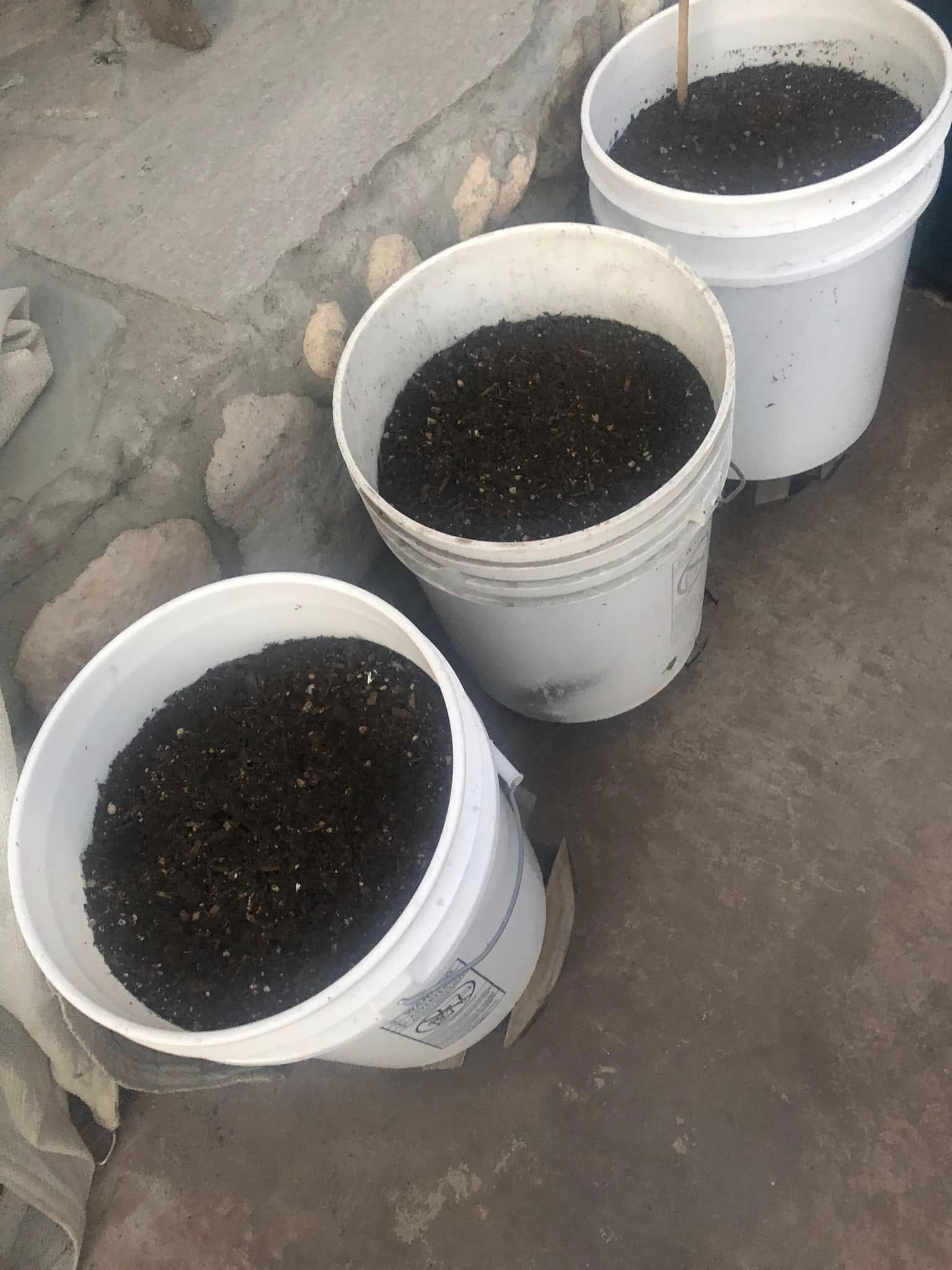
Growing potatoes in 5-gallon buckets is a convenient and efficient way to cultivate your delicious spuds, regardless of limited garden space or poor soil conditions. This article will provide valuable tips and techniques to ensure guaranteed success in your potato-growing endeavors. This guide will also equip you with everything you need to know about growing potatoes like a pro in these miniature containers, ensuring guaranteed success every time.
This post may have affiliate links. This means that sometimes when you click a link on our site and make a purchase on Amazon, we may earn a small commission at no additional cost to you. We only recommend products we truly believe in, and your support helps keep us running!
Table of Contents
Why Grow Potatoes in Buckets?
- Space-efficient: No vast plot of land is required. Buckets can be easily positioned on balconies, patios, or even indoors near a sunny window.
- Portable: Need to rearrange your garden layout? Simply pick up and move your potato buckets!
- Manageable: Easier to control soil quality, watering, and pest management compared to traditional in-ground gardening.
- Earlier harvests: Buckets warm up faster in spring, allowing for an earlier start to the potato growing season.
Choosing the Right Bucket

- Size: Opt for sturdy 5-gallon buckets with a capacity of at least 18 liters.
- Drainage: Ensure the bucket has drainage holes at the bottom to prevent waterlogging, which can lead to root rot. If there are no holes, create them using a drill or a hot nail.
- Material: Plastic buckets are readily available, affordable, and lightweight. However, if you’re concerned about aesthetics, consider using fabric grow bags, which offer similar benefits with a more decorative touch.
Preparing Your Potato Bucket Paradise
- Filling the Bucket: Start by adding a layer of coarse gravel or broken pottery shards to the bottom of the bucket. This will improve drainage and prevent the soil from clogging the holes.
- Creating a Potting Mix: Combine high-quality potting soil with compost or aged manure in a ratio of 2:1. This will provide your potatoes with the nutrients they need to thrive.
- Seed Selection: Choose certified seed potatoes suitable for container growing. Look for varieties known for their compact growth and high yields in containers, such as ‘Yukon Gold,’ ‘Red Pontiac,’ or ‘Fingerling’ potatoes.
Planting and Nurturing Your Sprouts
- Planting Depth: Fill the bucket with potting mix up to about 3 inches below the rim. Carefully place your seed potato eye-side up on the soil surface and gently cover it with 2-3 inches of potting mix.
- Watering Wisely: Water your potato plants regularly, keeping the soil consistently moist but not soggy. Aim to water deeply until water drains freely from the holes at the bottom of the bucket.
- Sun Seeking Sprouts: As your potato plants grow, gradually add more potting mix to the bucket, burying the lower stem as it develops. This encourages the formation of additional roots and tubers. Position your buckets in a location receiving at least 6-8 hours of direct sunlight daily.
- Staking for Support: As your potato plants mature, they may require support to prevent them from toppling over. Use stakes or tomato cages to provide stability.
Top Tips for Spudtacular Success
- Monitor Moisture: Ensure proper drainage and avoid overwatering, as this can lead to tuber rot.
- Fertilize Regularly: Supplement your plants with a balanced fertilizer every few weeks during the growing season. Opt for organic fertilizers to nourish your soil and potatoes naturally.
- Beetle Battle: Keep an eye out for potato beetles, a common pest that can munch on your leaves. Handpick and remove them, or use organic insecticidal soap if necessary.
- Mulch Magic: Apply a layer of organic mulch around the base of your plants to retain moisture, suppress weeds, and regulate soil temperature.
- Rotate Your Crops: To maintain soil health and prevent disease, practice crop rotation by planting something different in your potato buckets the following season.
Frequent Asked Questions
Can I grow potatoes in any 5-gallon bucket?
It is recommended to use sturdy, food-grade 5-gallon buckets for growing potatoes. Ensure that the buckets are clean and free from any chemical residues that could harm your plants.
How many potato tubers should I plant in each bucket?
Plant 2-3 potato tubers in each 5-gallon bucket, with the sprouts facing upwards. This will allow enough space for the tubers to grow and develop.
Can I reuse the potting mix for growing potatoes in subsequent seasons?
It is generally recommended to refresh the potting mix when starting a new growing season. Reusing the same potting mix may deplete the nutrients and increase the risk of disease and pest issues. Adding fresh compost and organic matter can help rejuvenate the potting mix.
Are there specific potato varieties recommended for growing in 5-gallon buckets?
Look for potato varieties that are known for their compact growth habit and suitability for container gardening. Compact or bush varieties are ideal choices as they don’t require excessive vertical space. Additionally, choose varieties that align with your taste preferences and cooking needs.
Can I grow potatoes in buckets indoors?
Yes, you can grow potatoes in buckets indoors as long as they receive sufficient sunlight. Place the buckets near a sunny window or use artificial grow lights to provide the necessary light for plant growth.
